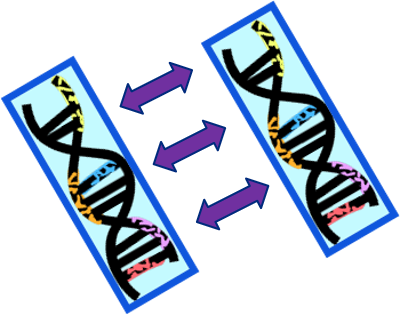Conventional TB Genotyping
What is Conventional TB Genotyping?

Conventional TB genotyping combines the results of two genotyping methods: spoligotyping and mycobacterial interspersed repetitive unit-variable number tandem repeats (MIRU-VNTR). Both methods examine specific regions in the M. tuberculosis genome and distinguish M. tuberculosis strains based on gain or loss of segments of DNA sequence.
- Spoligotyping examines the presence or absence of spacer sequences found in a direct-repeat region of the M. tuberculosis genome.
- MIRU-VNTR distinguishes M. tuberculosis strains by the difference in the number of copies of tandem repeats at specific regions, or loci, of the M. tuberculosis genome.
The National TB Genotyping Service (NTGS) has provided conventional TB genotyping since 2004. The results of these conventional genotyping methods are expressed in a digital code and used to assign a genotype name, a PCRType or a GENType. PCRType is assigned based on spoligotype and 12-locus MIRU-VNTR; and GENType is assigned based on spoligotype and 24-locus MIRU-VNTR.
M. tuberculosis isolates that have identical digital codes will be assigned the same genotype name. TB genotyping data and genotype name (GENType and PCRType) are reported to state and local program and laboratory staff via the Tuberculosis Genotyping Information Management System (TB GIMS).
How do we use TB genotyping information?
Because persons with TB disease in the same chain of recent transmission will have identical or nearly identical genotypes, TB genotyping information is used in combination with available epidemiologic data to identify clusters of TB cases that could be the result of recent transmission.
In the same way, TB genotyping can be used to distinguish persons whose TB disease is the result of TB infection that was acquired in the past. Algorithms that consider time and space to identify clustered cases that might represent recent transmission have been developed by CDC, and programs are notified of these alerted clusters through TB GIMS.
- TB Genotyping fact sheet
- Introduction to TB Genotyping slide set
- Best Practices for Genotyping-Based Tuberculosis Outbreak Detection pdf icon
- Guide to the Application of Genotyping to Tuberculosis Prevention and Control
- GENType: New Genotyping Terminology to Integrate 24-locus MIRU-VNTR pdf icon
- Cluster Prioritization Documentpdf icon
- TB GIMS